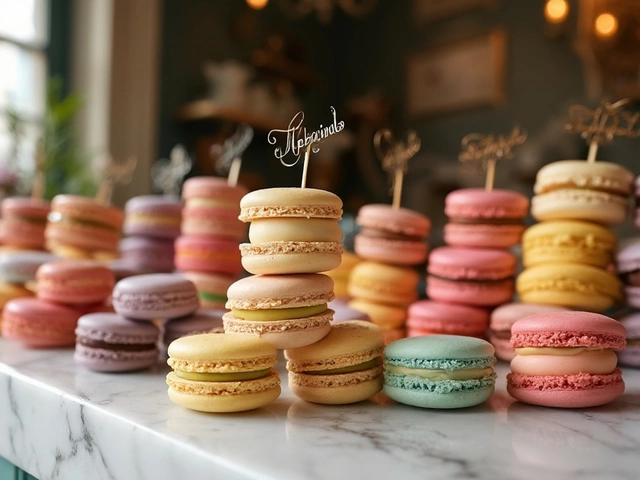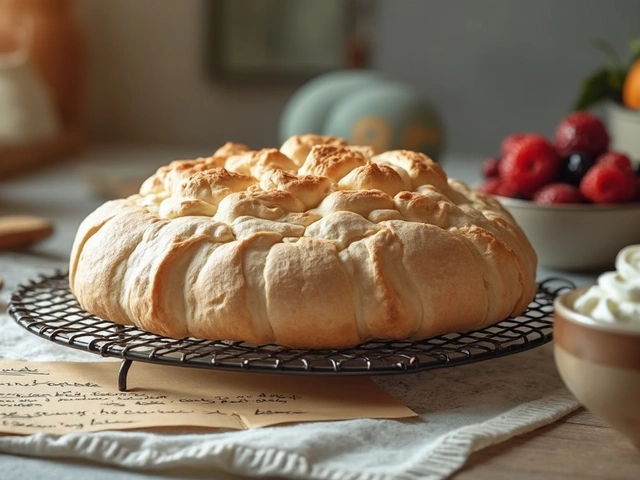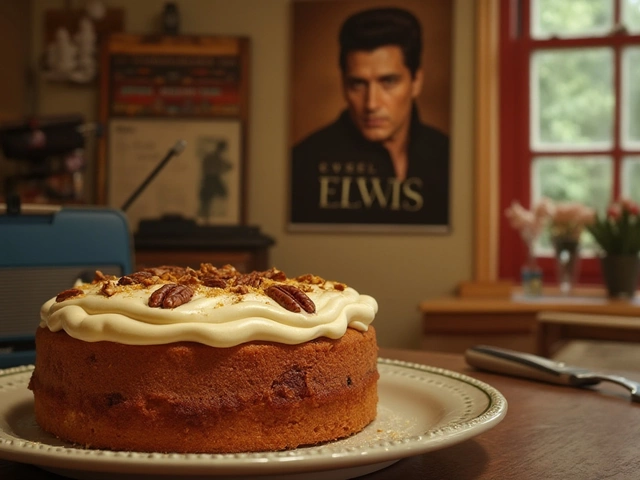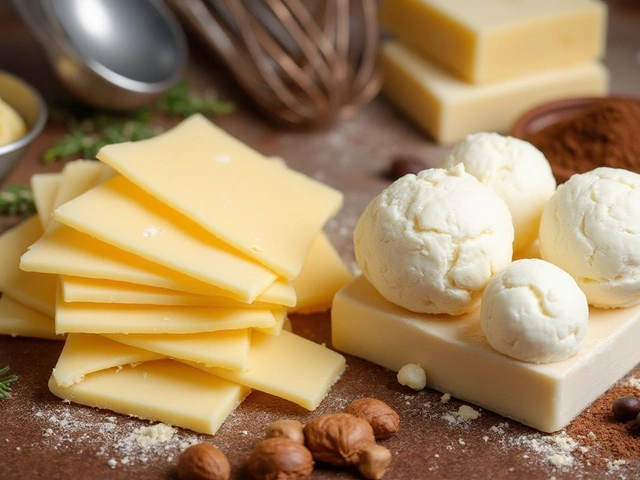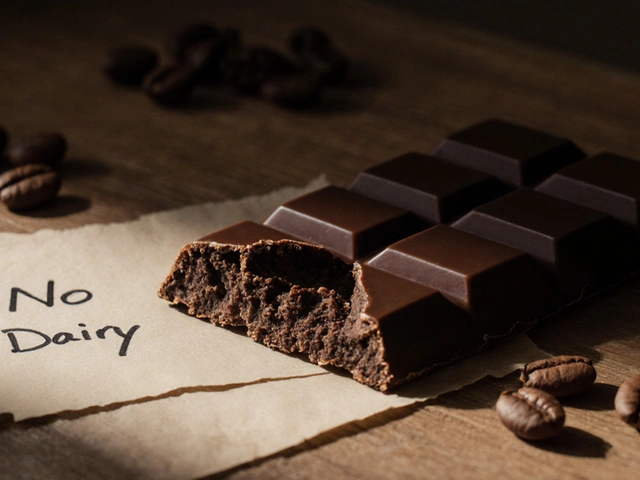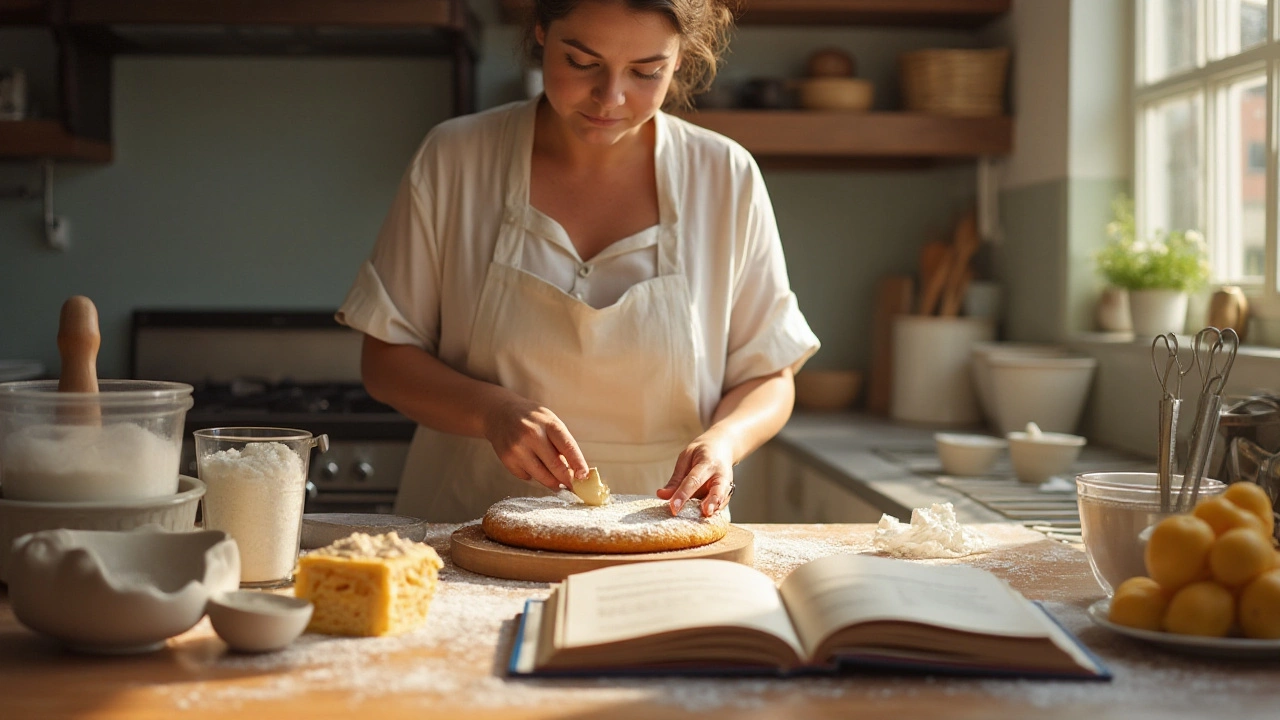
When it comes to cake flavors, one might think the endless combinations of chocolate, vanilla, fruit, or nuts would each hold the top spot. However, a single flavor has consistently captured the hearts of cake lovers around the globe, setting a standard few can rival.
To delve into what makes this particular flavor number one, we’ll explore its enchanting history and how it has evolved over years. With origins steeped in tradition, this favorite has managed to stay fresh and appealing, while maintaining a classic stature.
Not only will we discuss the reasons behind its enduring popularity, but we'll also offer practical tips to perfect the art of baking this timeless cake. Additionally, we’ll share some innovative variations that honor the classic while introducing new, exciting elements.
Whether you're a seasoned baker or an eager novice, the journey through this iconic flavor will inspire you to recreate it, bake it, and maybe even put your own unique twist on it. Ready your mixing bowls, because the essence of baking brilliance awaits!
- The Timeless Appeal of This Flavor
- A Brief History of Cake Flavors
- Why This Flavor Stands Out
- Tips and Tricks for Baking the Perfect Cake
- Innovative Twists on a Classic Delight
The Timeless Appeal of This Flavor
When it comes to cake flavors, vanilla has an uncanny elegance that never seems to fade. Known for its subtle yet distinct aroma and taste, vanilla has remained the go-to option for many bakers and dessert enthusiasts. Its simplicity is what makes it extraordinary; with a smoothness that can dance on the palate without overwhelming it, vanilla sets the perfect stage for more adventurous toppings and fillings. Part of its charm lies in versatility. Vanilla is a flavor that can easily pair with fruits like strawberries or raspberries, blend seamlessly with chocolate, or simply stand on its own with just a rich cream frosting.
One might wonder why vanilla holds such prestige when more decadent flavors, such as chocolate or red velvet, are always in the limelight. The answer is deeply rooted in tradition and history. Originating from the orchids of Mexico, vanilla was a sacred flavor used by ancient Aztecs and has made a grand journey across continents, exploring kitchen shelves worldwide. Such a universally beloved flavor naturally finds its way into recipes that evoke both nostalgia and innovation.
Its widespread popularity can also be attributed to vanilla's chameleon-like quality. It can be as rich and creamy or as light and fluffy as you desire, working wonders in both a simple sponge and a more complex layered cake. This adaptability is integral to its charm, as highlighted by culinary experts. "Vanilla’s ability to complement other flavors, without losing its own identity, is magical. It is the true workhorse in the flavor world," notes baking historian, Sarah Herdford, in a withering praise of this humble yet powerful taste.
"Vanilla’s ability to complement other flavors, without losing its own identity, is magical. It is the true workhorse in the flavor world." — Sarah Herdford, Baking Historian
From home kitchens to high-end patisseries, vanilla continues to reign as a staple choice, which is a testament to its timeless allure. There's something about the balance it offers that appeals to both the experienced and amateur baker alike. With vanilla, the air filled with a gentle, creamy fragrance that signals warmth and comfort is simply a remarkable culinary delight. It's no surprise that vanilla remains the most popular ice cream flavor and a go-to choice when crafting a classic cake.
A Brief History of Cake Flavors
The journey of cake flavors is as rich and varied as the history of cakes themselves. The word 'cake' is believed to have been derived from the Old Norse word 'kaka', and cakes in ancient times were much like our modern-day fruitcakes or gingerbread. They were dense, flat, and round. As early as 13th century, confectioners from the Middle East introduced sugar to European bakers, who previously relied on honey and nuts to sweeten and flavor their cakes. The evolution of cake flavors saw a significant leap during the Renaissance, as new ingredients such as spices and exotic fruits found their way into Europe from trade with the East. Vanilla and chocolate, two of the most enduring and beloved flavors of today, were introduced to Europe from the New World during the 16th century and quickly changed the cake world forever.
By the 17th century, cakes had become far more elaborate, as the introduction of more refined sugar and the invention of the globe-shaped oven created more possibilities for bakers, allowing them to experiment with various flavors. However, it wasn't until the 19th century, with the advent of baking powder and refined flour, that cakes as we know them became possible. During this period, regional flavors began to emerge, often influenced by local ingredients and traditions. For instance, the popular vanilla flavor cake we know today started gaining popularity as vanilla plantations expanded in the colonies of Madagascar and Mexico. As each region adapted its cake flavors to suit local palates and available ingredients, the palette of cake flavors broadened even further.
In the early 20th century, trends in cake flavors reflected cultural shifts. During the war years, flavors were influenced by the rationing of ingredients, which led to inventive alternatives like carrot cake gaining popularity. Post-war prosperity brought a return to rich and opulent flavors, with vibrant colors and diverse toppings becoming fashionable. Moreover, the influence of American culture spread globally, as did their taste for indulgently flavored cakes like Red Velvet and German Chocolate.
The Rise of the Popular Cake Taste
The past few decades have seen an unprecedented explosion in creativity and diversity in cake flavors. Driven by global cultural exchanges, migration, and modern media, today's cakes might incorporate spices from India, matcha from Japan, or dulce de leche from Latin America. Baking shows and social media have played a significant role in popularizing and sharing these new and diverse flavors widely, pushing bakers to experiment and innovate constantly. In modern patisserie, both amateur and professional bakers often blend traditional influences with modern tastes to create new flavor profiles.
Even with all these innovations, the number one flavor cake remains remarkably consistent. The classic vanilla and chocolate have withstood the test of time and trends, often serving as the comforting and familiar base upon which more exotic or complex flavors can be built. "The beauty of classic flavors like vanilla and chocolate is in their versatility," said renowned pastry chef Claire Ptak in a recent interview with a leading culinary magazine.
“These flavors provide a blank canvas, allowing bakers to add their unique twist, whether it’s a hint of spice, a splash of liqueur, or a swirl of fruit.”Ultimately, the history of cake flavors is a testament to humanity’s endless creativity and the ongoing cultural exchange that continues to influence our palates today.
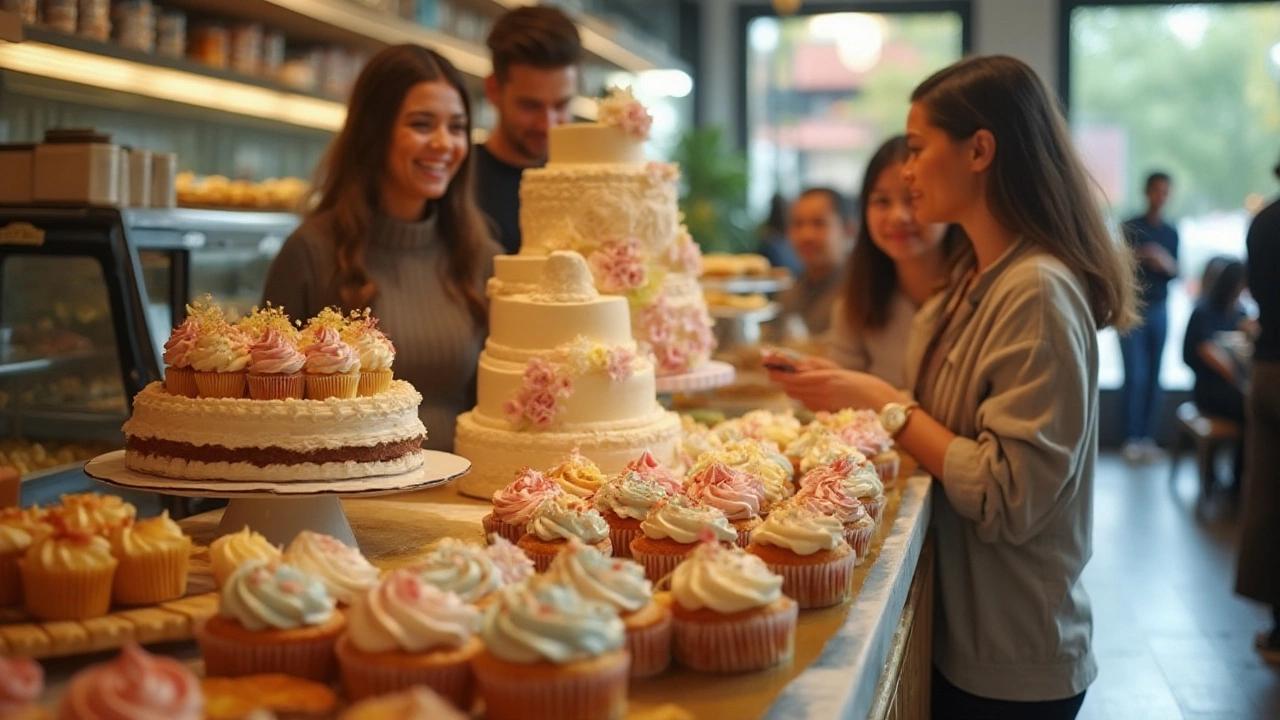
Why This Flavor Stands Out
The unrivaled position of cake flavors like this one doesn't happen by accident or tradition alone—it's a result of its unique versatility and universal appeal. Often described as the 'perfect canvas,' this flavor offers a remarkable ability to pair flawlessly with nearly every imaginable ingredient, from the sweet and sugary to the sophisticated and savory. This quality has undoubtedly contributed to its status as the number one choice among cake enthusiasts worldwide.
This flavor also shines in its ability to evoke nostalgia, a force nearly impossible to replicate artificially. The scent and taste often transport people back to cherished childhood memories of birthday parties or family gatherings. Its comforting and familiar profile makes it a favorite across generations, transcending age and cultural barriers. Such attributes have kept it relevant even in a culinary world eager for innovation and change.
"The beauty of this flavor lies in its simplicity; it can stand alone or be the perfect companion for other flavors—it's this duality that keeps it at the top," says renowned pastry chef and author, Mary Barr Davidson.
From a technical standpoint, this flavor's intrinsic balance makes it stand out. Its defined taste is never too overpowering or subtle, allowing chefs and home bakers alike the freedom to let their creativity shine. With just a few tweaks—a hint of citrus, a splash of rum, or an infusion of exotic spices—it can take on an entirely new character without losing its essential identity.
The statistics of its popularity affirm its status. In a survey conducted by the International Baking Association, this flavor was reported as the preferred choice for 45% of respondents when asked about their top cake option for celebrations and casual indulgence alike. It effortlessly maintains a balance between classic and contemporary, making it an ideal choice for any occasion.
Lastly, let’s talk about the science behind the flavor. The harmonious blend of sugar and fat content ensures a moist, delightful crumb—a characteristic sought by bakers striving for perfection in texture. Without this balanced chemistry, achieving such an exquisite palate experience would be unfathomable. This flavor’s flexibility is its power; adaptable enough for intricate designs and simple enough for afternoon tea, there seems to be no occasion where it doesn’t belong.
Tips and Tricks for Baking the Perfect Cake
Baking a cake that consistently delights the senses is a skill worth mastering, whether you're concocting the best cake recipe for a celebratory occasion or simply indulging a sweet tooth. To ensure every bite is sublime, consider these tried-and-true methods. Begin with fresh, high-quality ingredients because they are the heart and soul of any cake. Flour should be fresh to maintain its rising power. Similarly, using real butter instead of margarine can significantly enhance both texture and taste.
Temperature plays a crucial role when creating the number one cake. It is vital to ensure all your ingredients are at room temperature before mixing. This means setting out eggs, butter, and liquids such as milk at least an hour before you start baking. This practice allows for a smoother batter, making it easier to mix, which ultimately yields a lighter and more tender crumb structure. Precision is key, so make use of kitchen scales for accurate measurements rather than relying solely on measuring cups, which can sometimes lead to discrepancies.
For the ultimate in cake flavor, consider adding a touch of your favorite extract or zest. A pinch of salt can also work wonders, balancing sweetness and enhancing the cake’s natural flavors. As many exquisite chefs say, "Cooking is an art, but baking is a science," a notion echoed by esteemed baker Mary Berry, who says,
"Follow the recipe precisely if you want the cake to turn out as expected."
Once your batter is expertly prepared, consider the cake flavors you're working with. If trying something different like infusing flavors post-baking, options abound. After all, creativity knows no bounds in the kitchen. For example, soaking syrup into the baked layers can infuse them with additional aroma and moisture, leading to a more complex flavor profile and an irresistibly moist cake.
Baking times and oven temperatures are not uniform; rather, they vary by brand and model. To avoid over-baking, check your cake's doneness a few minutes before the recommended baking time. A common method involves using a toothpick; if it comes out clean from the center of the cake, it’s ready. Finally, patience is a virtue often overlooked. Allow your cake to cool in its pan for at least 15 minutes before turning it out onto a rack to cool completely. This ensures your masterpiece maintains its structure and doesn’t collapse.
Additional Tips for Innovative Baking
Experimentation in baking leads to the discovery of new taste sensations. Play with proportions and popular cake taste combinations, yet never shy from the classics. Innovate by incorporating seasonal fruits, like crushed berries or pureed squash, into your batter for an added depth of flavor. If you're feeling adventurous, sprinkle in a smattering of spices, such as cinnamon or nutmeg, for warmth and complexity. If decorating, let your artistic side run wild, experimenting with textures and colors to produce delectable cakes that are as appealing to the eye as they are to the palate.
| Ingredient | Use |
|---|---|
| Butter | Provides moisture and flavor |
| Sugar | Adds sweetness and helps with browning |
| Eggs | Binds ingredients and adds structure |
| Flour | Gives cakes their texture and assists in rising |
In your quest for the perfect cake, remember that joy comes from the journey as much as the destination. Don’t be discouraged by the occasional less-than-perfect outcome; every bake is a lesson learned, shaping you into a more skilled baker.

Innovative Twists on a Classic Delight
In the expansive world of cakes, sometimes the best way to celebrate a classic is to give it a refreshing twist. Take the universally adored cake flavor that has captivated hearts for generations; while it's loved in its traditional form, adding a touch of modern flair ensures it remains as irresistible as ever. Bakers and innovators have taken to exploring new horizons, crafting contemporary versions of this beloved treat that delight the senses.
Adding unexpected ingredients can elevate the flavor profile of classic cakes to new heights. For instance, think about the infusion of exotic spices like cardamom or ginger, which can impart a warming depth perfect for a cozy gathering. Matcha powder, with its distinctive green hue and earthy taste, not only gives a visual lift to the cake but also provides a trendy, antioxidant-rich choice. Using unexpected elements like black sesame seeds or tahini swirls introduces a nutty richness that's both sophisticated and satisfying.
For those who adore the sweet and salty combination, consider sprinkling flaky sea salt atop a caramel glaze, melding perfectly with the sumptuous, robust flavors of the cake. An interesting textural play can be achieved with crushed nuts or a crumbly topping that contrasts the cake's soft interior. These varying textures provide a multisensory experience with every bite, fascinating both the palette and the eyes.
"Innovation in baking is akin to a painter discovering new colors,” says renowned chef Mary Berry. “By layering flavors and experimenting boldly, we give new life to even the most traditional recipes."
But the trend isn't just about the flavors; presentation plays a pivotal role in reimagining these desserts. Avant-garde cake designs, with intricate lattice frostings and minimalist aesthetics, add a contemporary spin without altering the fundamental taste. Using fresh, organic petals as decorations creates an elegant, nature-inspired look when pleasing both visual and gustatory senses.
Don't shy away from technology either. Bakers are now using 3D printing technology to create molds for cake decorations, turning simple cakes into edible pieces of art. This blend of tech and tradition exemplifies how the best cake recipes can evolve in today's digital age while keeping the core flavors sacred and timeless.
Experimenting Boldly
Trying different techniques can yield splendid results. Consider experimenting with baking variations, such as incorporating swirls of tangy fruit compote alongside layers of rich cream to create a marbling effect that's visually stunning and uniquely flavored.
Set up a tasting session, bring in friends, family, or colleagues to offer feedback on different cake flavors and innovations. Often, a communal approach can unearth unexplored possibilities and flavors that a single palate might overlook. This collaborative artistry not only brings people together but also encourages experimentation in ways that transcend traditional culinary boundaries, resulting in a feast for both heart and soul.

